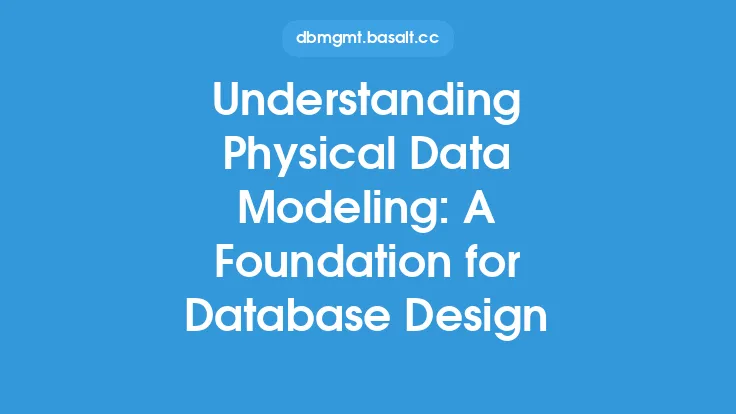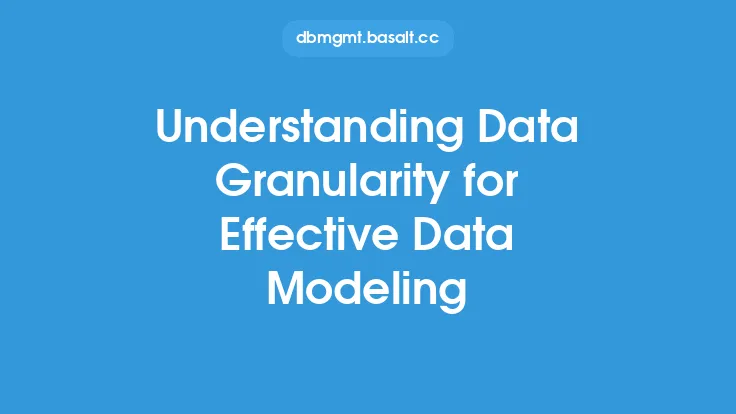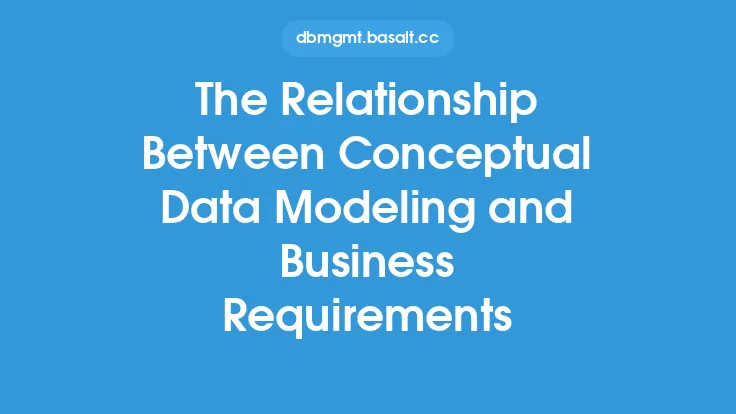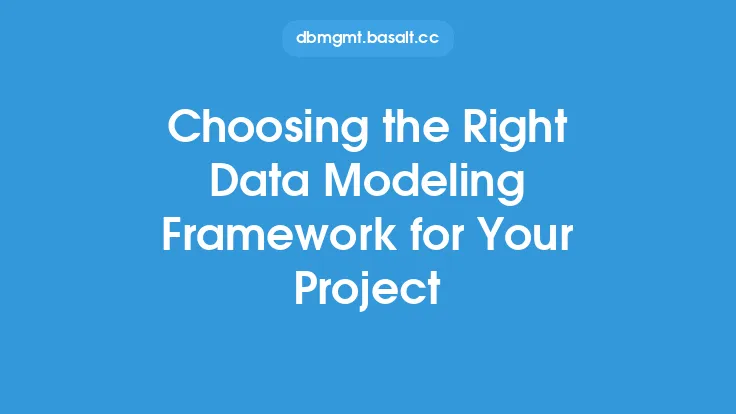Understanding the requirements for data modeling in Business Intelligence (BI) is crucial for the success of any BI project. Data modeling is the process of creating a conceptual representation of the data used in a BI system, and it plays a critical role in ensuring that the data is accurate, consistent, and easily accessible to end-users. In this article, we will delve into the requirements for data modeling in BI, exploring the key concepts, techniques, and best practices that are essential for creating effective data models.
Introduction to Data Modeling Requirements
Data modeling requirements for BI involve a deep understanding of the business needs and goals of the organization. The data model should be designed to support the organization's decision-making processes, providing a framework for data analysis and reporting. To achieve this, data modelers must work closely with stakeholders to identify the key performance indicators (KPIs) and metrics that are relevant to the business. This involves gathering requirements from various sources, including business users, IT staff, and external data providers.
Business Requirements Gathering
Gathering business requirements is a critical step in the data modeling process. This involves identifying the business needs and goals of the organization, as well as the data requirements for each business process. Data modelers should use techniques such as interviews, surveys, and workshops to gather information from stakeholders. The goal is to create a comprehensive understanding of the business requirements, including the data entities, attributes, and relationships that are relevant to the organization.
Data Requirements Analysis
Once the business requirements have been gathered, the next step is to analyze the data requirements. This involves identifying the data sources, data formats, and data quality issues that may impact the data model. Data modelers should use techniques such as data profiling and data quality assessment to analyze the data and identify any issues that need to be addressed. The goal is to create a data model that is robust, scalable, and flexible enough to support the business requirements.
Data Modeling Techniques
There are several data modeling techniques that can be used in BI, including entity-relationship modeling, dimensional modeling, and object-oriented modeling. Entity-relationship modeling is a traditional approach that involves identifying the entities, attributes, and relationships in the data. Dimensional modeling is a more modern approach that involves organizing the data into facts and dimensions, making it easier to analyze and report on the data. Object-oriented modeling is a technique that involves modeling the data as objects, making it easier to create complex data models.
Data Model Design
The data model design is a critical step in the data modeling process. The design should be based on the business requirements and data requirements, and should take into account the data modeling techniques and best practices. The goal is to create a data model that is easy to understand, maintain, and extend. Data modelers should use tools such as entity-relationship diagrams, dimensional models, and data flow diagrams to create a visual representation of the data model.
Data Governance and Quality
Data governance and quality are critical components of data modeling in BI. Data governance involves creating policies and procedures for managing the data, including data security, data privacy, and data quality. Data quality involves ensuring that the data is accurate, complete, and consistent, and that it meets the business requirements. Data modelers should use techniques such as data validation, data cleansing, and data normalization to ensure that the data is of high quality.
Data Modeling Tools and Technologies
There are several data modeling tools and technologies that can be used in BI, including data modeling software, data warehousing tools, and business intelligence platforms. Data modeling software such as ER/Studio, PowerDesigner, and Enterprise Architect can be used to create and manage data models. Data warehousing tools such as Amazon Redshift, Google BigQuery, and Microsoft Azure Synapse Analytics can be used to design and implement data warehouses. Business intelligence platforms such as Tableau, Power BI, and QlikView can be used to create reports and dashboards.
Best Practices for Data Modeling
There are several best practices for data modeling in BI, including keeping the data model simple and intuitive, using standard data modeling notation, and documenting the data model. Data modelers should also use version control systems to manage changes to the data model, and should create a data model that is flexible and scalable. Additionally, data modelers should use data modeling standards and guidelines to ensure that the data model is consistent and accurate.
Conclusion
In conclusion, understanding the requirements for data modeling in BI is critical for the success of any BI project. Data modeling involves creating a conceptual representation of the data used in a BI system, and it plays a critical role in ensuring that the data is accurate, consistent, and easily accessible to end-users. By following the best practices and techniques outlined in this article, data modelers can create effective data models that support the business requirements and goals of the organization. Whether you are a seasoned data modeler or just starting out, this article has provided a comprehensive overview of the requirements for data modeling in BI, and has given you the knowledge and skills you need to create effective data models that drive business success.





